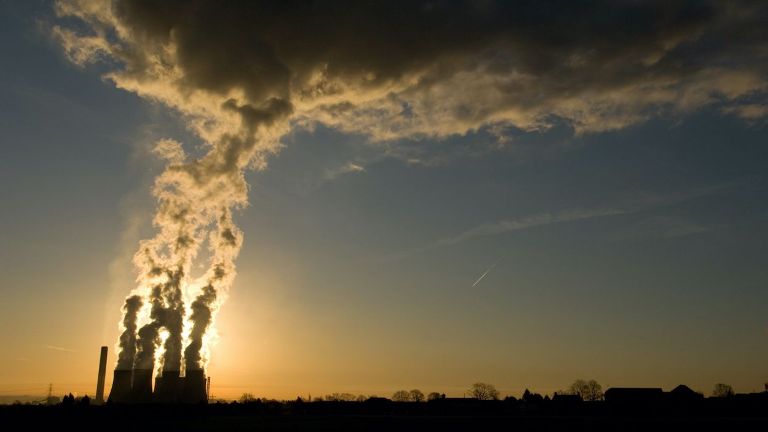
Carbon dioxide in air at highest level in 4m yrs
The Straits Times
Published:09 Jun 2021, 11:26 AM

Carbon dioxide in air at highest level in 4m yrs
Despite a massive reduction in commuting and in many commercial activities during the early months of the pandemic, the amount of carbon in Earth's atmosphere in May reached its highest level in modern history, a global indicator released on Monday (June 7) showed.
The amount of carbon in the air now is as much as it was about four million years ago based on the the findings by scientists from the National Oceanic and Atmospheric Administration (NOAA) and the Scripps Institution of Oceanography at the University of California San Diego.
Based on the amount of carbon dioxide (CO2) in the air at NOAA's weather station on Mauna Loa in Hawaii, it was the highest since measurements began 63 years ago.
We are on the brink of a golden age with Covid-19 both disrupting and creating new business opportunities for digital transformation across all industries. Join us at #2021AlibabaCloudSummit LIVE! today 14:00 (GMT+8) to discover how we drive "#AccelerateDigitalization" post-pandemic,...
The measurement, called the Keeling Curve after Charles David Keeling, the scientist who began tracking carbon dioxide there in 1958, is a global benchmark for atmospheric carbon levels.
Instruments perched on NOAA's mountaintop observatory recorded carbon dioxide at about 419 parts per million last month, more than the 417 parts per million in May 2020.
So what was the world like the last time CO2 levels were at this level?
The current levels of atmospheric carbon dioxide are likely comparable to those seen during the Pliocene era, 4.1 million to 4.5 million years ago, the Scripps scientists said.
By analysing ice cores and ocean sediments, researchers have determined that temperatures during that time were nearly 4 degrees C higher than in the modern preindustrial era and that sea levels were about 24 metres higher than today.
Mountain of carbon
Because carbon dioxide is a key driver of climate change, the findings show that reducing the use of fossil fuels, deforestation and other practices that lead to carbon emissions must be a top priority to avoid catastrophic consequences, Pieter Tans, a scientist with NOAA's Global Monitoring Laboratory, said in a report on the emissions.
"We are adding roughly 40 billion metric tonnes of CO2 pollution to the atmosphere per year," Dr Tans wrote. "That is a mountain of carbon that we dig up out of the Earth, burn, and release into the atmosphere as CO2 - year after year."
The stark new milestone comes as leaders from the Group of 7 nations prepare to meet in Cornwall, England, this week to discuss how they might step up efforts to tackle climate change.
The data provides yet another warning that countries are still very far from getting their planet-warming greenhouse gases under control.
Global emissions temporarily dipped last year as countries locked down amid the pandemic, shuttering businesses and factories. According to the International Energy Agency, the world emitted 5.8 per cent less carbon dioxide in 2020 than it did in 2019, the largest one-year drop ever recorded.
But that dip made little difference to the total amount of CO2 accumulating in the atmosphere. While about half of the CO2 emitted by mankind's activities is absorbed by the world's trees and oceans, the other half stays in the atmosphere, where it lingers for thousands of years, steadily warming the planet through the greenhouse effect.
"As long as we keep emitting carbon dioxide, it's going to continue to pile up in the atmosphere," said Ralph Keeling, a geochemist who runs the Scripps Oceanography CO2 program. The project, begun by his father, Charles D. Keeling, has been taking readings since 1958 at a NOAA observatory on the Mauna Loa volcano.